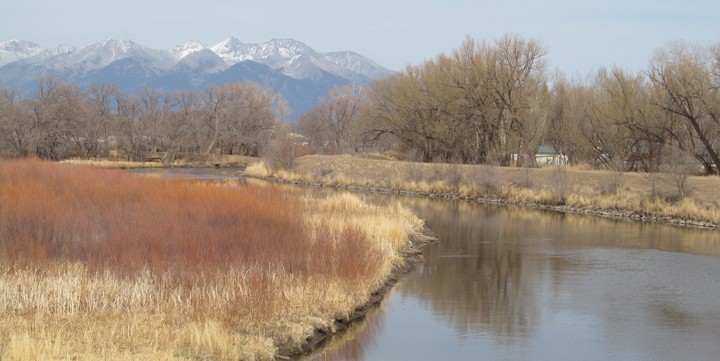Top stories of 2018 in SLV: #3--Drought conditions persist in RG Basin

VALLEY — Drought and dry conditions persisted throughout most of 2018 and contributed to multiple fire bans and fires, including the devastating Spring Fire in the eastern portion of the San Luis Valley. (See top story.)
Dry conditions emerged early on in the year. Rio Grande Basin snowpack was only at 31 percent of normal in January, with conditions only improving slightly to 45 percent of normal by mid February. In comparison, the snowpack was 152 percent of normal on February 8, 2017. The basin snowpack dropped to 37 percent of average in April, about the time Alamosa firefighters battled three separate fires in one day, with 300 acres consumed, two structures lost and a mobile home park evacuated.
On the east side of the basin, in the Sangre de Cristo range, most snow reporting sites were already dry by the end of April, including Medano, which meant less water and a shorter stream season at the Great Sand Dunes National Park & Preserve whose attendance is dependent in part on that streamflow.
The irrigation season began early this year so farmers could utilize what little water there was this year.
By summertime, some streams such as Ute Creek on the east side of the Valley were not running at all, and the annual streamflow for the Rio Grande was less than half of the long-term average, making this the fourth lowest year for the river in its 110 years of recorded history. The Conejos River system also produced less than half of the long-term average flow this year.
Comparisons were made to the historic drought year of 2002. Some streamflows were even lower this year than in 2002.
Fire bans were instituted across the Valley as early as April and continuing into the summer months. Bans were also instituted on fireworks, and the Fourth of July public fireworks display in Alamosa was delayed until Labor Day this year.
Even before the devastating Spring Fire, Costilla County firefighters dealt with multiple fires. In May, firefighters responded to back-to-back brush fires, with about three acres burned in the Indian Creek subdivision and about 40 acres burned in a meadow near San Acacio.
On the other side of the Valley, the Park Creek Fire, ignited by lighting on May 25 in the forest above Park Creek about eight miles southwest of South Fork on the Rio Grande National Forest, consumed about 61 acres and drew more than 100 firefighters. A smaller fire, the Continental Reservoir Fire, burned about 12 acres in the Rio Grande National Forest in late May and the South Fork Fire only consumed a fraction of an acre along the South Fork of Cat Creek.
In early July the U.S. Forest Service-Rio Grande National Forest reported a few small lightning-strike fires, all of which were quickly contained and consumed less than an acre.
The Rio Grande Basin is seeing a more positive ending to the year than its beginning, with the basin snowpack sitting at 66 percent of normal as of Friday, Dec. 28, with some areas of the basin such as Cochetopa Pass and Medano Pass exceeding 100 percent of normal.



